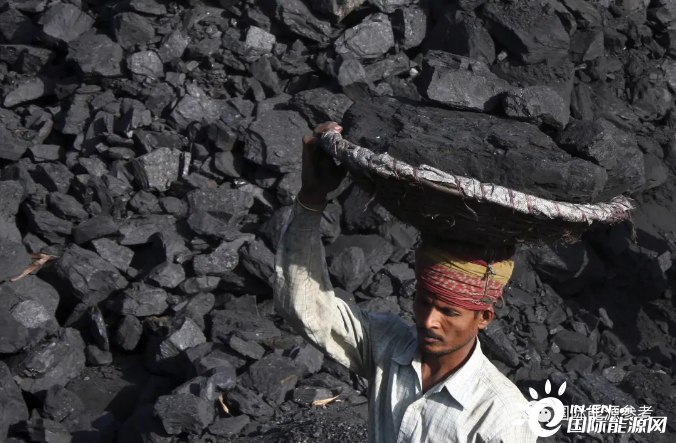Coal in short supply and India
2021-10-19
Since the beginning of September, India's coal shortage has escalated again and again. According to the data released by India's central power administration, as of the first week of October, about 80% of the coal stocks of 135 coal-fired power plants in India have fallen to the level of "dangerous" or "very dangerous", and most coal-fired power plants have less than five days of coal reserves.

No coal is available in the power plant
According to British reports, in the past week, due to the shortage of coal supply, power outages in many regions, including Rajasthan, Jharkhand and Bihar, have exceeded 14 hours. Among them, 13 coal-fired power plants in Maharashtra were forced to close due to "no coal available", and the state urged residents to save electricity. Meanwhile, three coal-fired power plants in Punjab also stopped power supply. Punjab has also implemented regular blackouts for up to six hours each time, which has triggered residents' protests.
"If there is no more coal supply for coal-fired power plants, there may even be a power outage in Delhi," Arvind kejriwal, chief minister of Delhi, wrote to Indian Prime Minister modi recently.
After the "power shortage" warning was issued in the Indian capital, Indian coal minister pralhad Joshi "came forward" to alleviate market panic on October 10. He said that India currently has sufficient coal stocks for power generation, and the Indian federal government will mobilize the coal reserves of Indian state-owned coal company Coal India to alleviate the pressure on power plants everywhere. India's Ministry of electricity said it would cooperate with power shortage areas to appropriately increase natural gas supply to fill the coal power gap.
However, according to industry analysis and calculation, coal India currently has a total of 72 million tons of coal reserves, and the company is expected to mobilize 40 million tons of them. However, this inventory level is only enough to maintain India's coal and electricity demand for 4 days, while the normal supply of coal requires at least 18 days of coal and carbon inventory.
In fact, India is not short of coal for two days. According to a number of foreign media reports such as Reuters, as early as early September this year, more than half of the coal-fired power plants in India had only one week's coal inventory, and the inventory of six coal-fired power plants had been cleared. Subsequently, even though the Indian government repeatedly called on power producers to increase coal imports, the lack of coal has intensified.
Misjudgment and ineffective supervision are blamed
In the face of severe "power shortage", the Ministry of coal of India explained that India has experienced frequent monsoon and rainy weather this year, resulting in problems in coal transportation of coal-fired power plants. At the same time, the international coal price continues to be high, and the total amount of coal imported by Indian utility power plants has decreased sharply. India's power sector insists that the coal shortage in India can be alleviated in the next few days.
However, the explanation of the Indian Ministry of coal can not convince the public at all, and the lack of reasonable solutions has led to many criticisms from the Indian energy sector.
Us news media CNBC wrote that in fact, the rainfall in India this year is almost the same as that in previous years. What causes India's coal shortage is the rapid decline of imported coal. India's official data show that from July to August this year, India's coal imports fell by about 45% year-on-year.
Novel coronavirus pneumonia Vibhuti Garg pointed out that India is in the economic recovery stage after the new crown pneumonia has been released. In recent months, the demand for electricity in India has risen rapidly. The power companies should have predicted the current scenario and there should be no serious shortage of electricity in India. "Under the current situation of power shortage in India, many stakeholders should be blamed."
The reporter also quoted Sunil dahiya, an analyst at the "energy and clean air research center", as saying that the crisis facing India is not caused by too little coal mine development capacity in India, but because Indian power producers and energy regulators lack reasonable prediction ability and are unable to reasonably plan coal reserves.
Meanwhile, vibhuti Garg also pointed out that in the past few years, the growth rate of India's renewable energy installed capacity has also slowed down. If the Indian government could spend enough efforts to promote the growth of photovoltaic, wind power or hydropower installed capacity, the new renewable energy installed capacity is expected to meet India's soaring power demand. This crisis could have been avoided.
Drag down India's economic recovery
It is generally predicted in the industry that under the circumstances of soaring global energy prices and continuous tight coal supply, India's coal shortage may be difficult to alleviate in the short term.
Since the beginning of this year, global coal prices have been rising again and again. In addition to the soaring import coal prices of Asian countries such as South Korea and Japan, coal in North America, Europe and other regions is also in short supply. Affected by factors such as rising international coal prices and high logistics costs, Indian coal importers hold a serious wait-and-see mood, and Indian coal imports are likely to remain depressed.
To make matters worse, India's domestic coal production is likely to be unsustainable. As early as a few years ago, the Indian government issued a plan that it would reduce its dependence on imported coal. By 2024, India's local coal production target was 1 billion tons. Since this year, although India's local coal production data have repeatedly hit record highs, the overall growth rate is still "mediocre", which is difficult to keep up with the growth of power demand. In addition, in the past year, the dependence of Indian cement, steel mills and other industrial fields on Indian local coal has increased. At the same time, the calorific value of Indian local coal is relatively low, the consumption of local coal in non power industry is high, and it is difficult to "distribute" the coal produced in India to the power field.
CNBC quoted Kunal Kundu, an Indian economist at Societe Generale, as saying that at present, industrial activities are leading India's economic growth, and the potential power crisis may have a direct impact on India's economy, which is just beginning to recover. Argus, a market research institution, also pointed out that the tight coal supply is likely to lead to production restrictions in Indian industry, which directly leads to the reduction of economic activity.
It is reported that October is also India's "holiday month". The industry expects that India's power consumption demand may rise further, and the power gap is likely to increase again at that time.
Hetal Gandhi, research director of CRISIL, a global rating agency of S & P, pointed out that the coal inventory of coal-fired power plants in India may not recover until December. At that time, the inventory may be able to meet the demand of 8-10 days, but it may still take half a year or more to return to the normal reserve level.
Source: International Energy Reference

No coal is available in the power plant
According to British reports, in the past week, due to the shortage of coal supply, power outages in many regions, including Rajasthan, Jharkhand and Bihar, have exceeded 14 hours. Among them, 13 coal-fired power plants in Maharashtra were forced to close due to "no coal available", and the state urged residents to save electricity. Meanwhile, three coal-fired power plants in Punjab also stopped power supply. Punjab has also implemented regular blackouts for up to six hours each time, which has triggered residents' protests.
"If there is no more coal supply for coal-fired power plants, there may even be a power outage in Delhi," Arvind kejriwal, chief minister of Delhi, wrote to Indian Prime Minister modi recently.
After the "power shortage" warning was issued in the Indian capital, Indian coal minister pralhad Joshi "came forward" to alleviate market panic on October 10. He said that India currently has sufficient coal stocks for power generation, and the Indian federal government will mobilize the coal reserves of Indian state-owned coal company Coal India to alleviate the pressure on power plants everywhere. India's Ministry of electricity said it would cooperate with power shortage areas to appropriately increase natural gas supply to fill the coal power gap.
However, according to industry analysis and calculation, coal India currently has a total of 72 million tons of coal reserves, and the company is expected to mobilize 40 million tons of them. However, this inventory level is only enough to maintain India's coal and electricity demand for 4 days, while the normal supply of coal requires at least 18 days of coal and carbon inventory.
In fact, India is not short of coal for two days. According to a number of foreign media reports such as Reuters, as early as early September this year, more than half of the coal-fired power plants in India had only one week's coal inventory, and the inventory of six coal-fired power plants had been cleared. Subsequently, even though the Indian government repeatedly called on power producers to increase coal imports, the lack of coal has intensified.
Misjudgment and ineffective supervision are blamed
In the face of severe "power shortage", the Ministry of coal of India explained that India has experienced frequent monsoon and rainy weather this year, resulting in problems in coal transportation of coal-fired power plants. At the same time, the international coal price continues to be high, and the total amount of coal imported by Indian utility power plants has decreased sharply. India's power sector insists that the coal shortage in India can be alleviated in the next few days.
However, the explanation of the Indian Ministry of coal can not convince the public at all, and the lack of reasonable solutions has led to many criticisms from the Indian energy sector.
Us news media CNBC wrote that in fact, the rainfall in India this year is almost the same as that in previous years. What causes India's coal shortage is the rapid decline of imported coal. India's official data show that from July to August this year, India's coal imports fell by about 45% year-on-year.
Novel coronavirus pneumonia Vibhuti Garg pointed out that India is in the economic recovery stage after the new crown pneumonia has been released. In recent months, the demand for electricity in India has risen rapidly. The power companies should have predicted the current scenario and there should be no serious shortage of electricity in India. "Under the current situation of power shortage in India, many stakeholders should be blamed."
The reporter also quoted Sunil dahiya, an analyst at the "energy and clean air research center", as saying that the crisis facing India is not caused by too little coal mine development capacity in India, but because Indian power producers and energy regulators lack reasonable prediction ability and are unable to reasonably plan coal reserves.
Meanwhile, vibhuti Garg also pointed out that in the past few years, the growth rate of India's renewable energy installed capacity has also slowed down. If the Indian government could spend enough efforts to promote the growth of photovoltaic, wind power or hydropower installed capacity, the new renewable energy installed capacity is expected to meet India's soaring power demand. This crisis could have been avoided.
Drag down India's economic recovery
It is generally predicted in the industry that under the circumstances of soaring global energy prices and continuous tight coal supply, India's coal shortage may be difficult to alleviate in the short term.
Since the beginning of this year, global coal prices have been rising again and again. In addition to the soaring import coal prices of Asian countries such as South Korea and Japan, coal in North America, Europe and other regions is also in short supply. Affected by factors such as rising international coal prices and high logistics costs, Indian coal importers hold a serious wait-and-see mood, and Indian coal imports are likely to remain depressed.
To make matters worse, India's domestic coal production is likely to be unsustainable. As early as a few years ago, the Indian government issued a plan that it would reduce its dependence on imported coal. By 2024, India's local coal production target was 1 billion tons. Since this year, although India's local coal production data have repeatedly hit record highs, the overall growth rate is still "mediocre", which is difficult to keep up with the growth of power demand. In addition, in the past year, the dependence of Indian cement, steel mills and other industrial fields on Indian local coal has increased. At the same time, the calorific value of Indian local coal is relatively low, the consumption of local coal in non power industry is high, and it is difficult to "distribute" the coal produced in India to the power field.
CNBC quoted Kunal Kundu, an Indian economist at Societe Generale, as saying that at present, industrial activities are leading India's economic growth, and the potential power crisis may have a direct impact on India's economy, which is just beginning to recover. Argus, a market research institution, also pointed out that the tight coal supply is likely to lead to production restrictions in Indian industry, which directly leads to the reduction of economic activity.
It is reported that October is also India's "holiday month". The industry expects that India's power consumption demand may rise further, and the power gap is likely to increase again at that time.
Hetal Gandhi, research director of CRISIL, a global rating agency of S & P, pointed out that the coal inventory of coal-fired power plants in India may not recover until December. At that time, the inventory may be able to meet the demand of 8-10 days, but it may still take half a year or more to return to the normal reserve level.
Source: International Energy Reference










